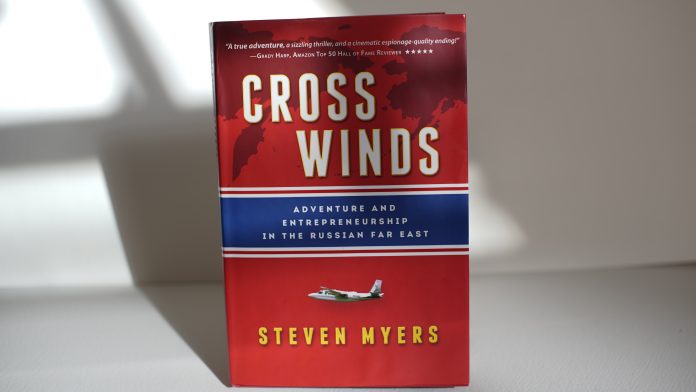
Hard work, vision, grit, sacrifice…there’s endless advice on developing any of these attributes crucial to entrepreneurship. Yet, little is said about the one thing all entrepreneurs must have if they’re going to succeed:
Courage
As a four-time CEO of public and private companies, the founder of one of the first post-Soviet era joint ventures, and the first American since Charles Lindbergh to pilot an aircraft into the Russian Kamchatka peninsula (1992), I’ve seen that courage is the one thing that matters most in success as an entrepreneur or any other endeavor in life for that matter.
What every hero, explorer, adventurer, warrior, first responder, pilot, athlete, and entrepreneur all have in common is the extraordinary ability to push through the uncertainties of their situations to achieve success. This is what courage truly is. In some cases, it extends to sacrificing one’s life.
Where does the courage to take these actions come from? How can entrepreneurs use it to achieve great things?
The truth is that most entrepreneurs fail for very good reasons; lack of preparation, confusing an opportunity with a mirage, an idea that couldn’t hold up to competitive market pressures, poor macroeconomic conditions leading to undercapitalization or excessive costs, or just bad timing. Merely facing this reality takes courage. Yet, even if all of these factors are working in your favor, you still have to summon the courage to make the commitments needed to push through the uncertainties inherent in entrepreneurship. You certainly won’t have all the answers. You’ll have every reason to be afraid because everything will be on the line. Without courage, you won’t be able to push the button and make the right decisions at the right time.
Courage is not just about accepting risk. Risk is measurable with the ways and means of determining if they are acceptable or can be mitigated. It’s the residual unknown unknowns of situations, the uncertainty of situations that can be terrifying. Most people simply can’t tolerate uncertainty. Tony Robbins observed that most people would prefer to live in mediocrity than take the actions they could take to significantly improve their lives, even if the better outcome was virtually certain. Their fear paralyzes them. They are pessimists. And it is highly contagious. Conversely, People with courage are invariably optimists. They find a way to push through their fears, doubts, and uncertainties to accomplish what they must.
My story of courage began at the bottom of a mountain crevasse, where at 20 years old I was left for dead after a terrible fall during a mountain climbing trip. The fall should have killed me at least thirty feet before hitting anything. Miraculously, my final landing pad had been the only flat rock around. I had a fractured pelvis, bleeding from a compound fracture to the right arm and forehead gash, and more.
Worse, I was suffocating. “If I could just figure out how to get one breath, just one, maybe I could figure out how to survive,” I thought. Eventually, I began breathing. By the time I could move around a little, I was going into shock and hypothermia. I realized that my friends assumed I was dead. There was no way to reach me. I gave myself first aid, stopped the bleeding, and made a sling for my arm. With one hand, I dug a pit in the gravel and buried myself in my sleeping bag to conserve heat.
By sunrise, I was freezing and desperate to get into the sunlight. I spent all morning crawling through gravel and rocks, looking for a place to climb up and out. The spot I chose was not anything a sane person would attempt. I was out of options. I began slithering up the side of the crevasse wall with one arm and legs that could do little more than support my weight, one very short step at a time. Any misstep would have been the end of me as I held on only by the fingertips of my left hand. Hours later, sitting on a rock in the sunlight, looking down-slope to the tree line and the beautiful terrain beyond, I felt invigorated. I knew I would survive.
The following day, very stunned rangers on horseback ran into me, hobbling very slowly down a narrow trail using a crutch I had fashioned from a forest tree branch. They hadn’t thought it was a survivable situation. They were coming up for my body.
As I lay in the hospital ICU the following day, I realized that it had never occurred to me I wouldn’t survive. That’s not to say that I wasn’t afraid. The experience was as terrifying as it sounds. But my entire focus had been on what I needed to do next to survive. At the bottom of that crevasse, I discovered my innate sense of optimism and came out of that crevasse with a purpose, a plan, and a mantra… “The cornerstone of courage is optimism.” My life was never the same.
While I don’t suggest an un-survivable experience as a practical approach to learning about courage, here’s what my personal experience has taught me that may offer all of us a useful strategy for finding the innate courage within:
Acknowledge your fears
We all have fears. Make a list of what you are afraid of. This might require some soul-searching: maybe you’ve never really thought about what frightens you before. It could be roller coasters, tall heights, airplanes, caves, snakes, spiders, white water rafting, etc. Whatever you’re afraid of, write it down. Prioritize a top ten list.
Confront your fears
Create a plan to confront your fears and anxieties for each. If you’re afraid of airplanes, arrange a private flight where you can sit in the copilot seat. If it’s roller-coaster rides, head to an amusement park and climb aboard.
By confronting your feelings of fear and discomfort, you may come to realize that a normal response to fear is to create the illusion of control. Your mind pretends that you’re able to make the world small enough for you to feel safe.
Taking prudent precautions is always a practical way to reduce risk. But, thinking that one seat on an airplane is somehow safer than any other is a good example of fear masquerading as control.
Ask yourself why you’re afraid
This requires some introspection. Begin to notice when it is that your choices are shaped by fear, and pause to ask yourself what, exactly, you’re afraid of. Ridicule? Discomfort? Physical harm? Failure? Imagine the worst-possible scenario in each case and consider how likely it really is.
Practice venturing beyond your comfort zone
Look for opportunities to get out of your comfort zone and experience the things that trigger fear. Start small and keep at it. Courage is like a muscle: the more you challenge yourself to do things that frighten you and let go of the illusion of control, the more courage you’ll build.
A famous Churchill saying goes that the pessimist sees the difficulty in every situation while the optimist sees the opportunity in every difficulty. Most people know who they are. Some people characterize themselves as “realists.” I think of them as pessimists with a positive attitude. Successful entrepreneurs are pathologically optimistic. If you’re not an optimist, maybe think about not being an entrepreneur and, instead, working with one. Perhaps as the CFO or the COO. Successful entrepreneurs need pessimists and realists to work with to keep us from running off a cliff. I’ll be forever grateful to my COO and CFO for the positive impact their natures made on me.




